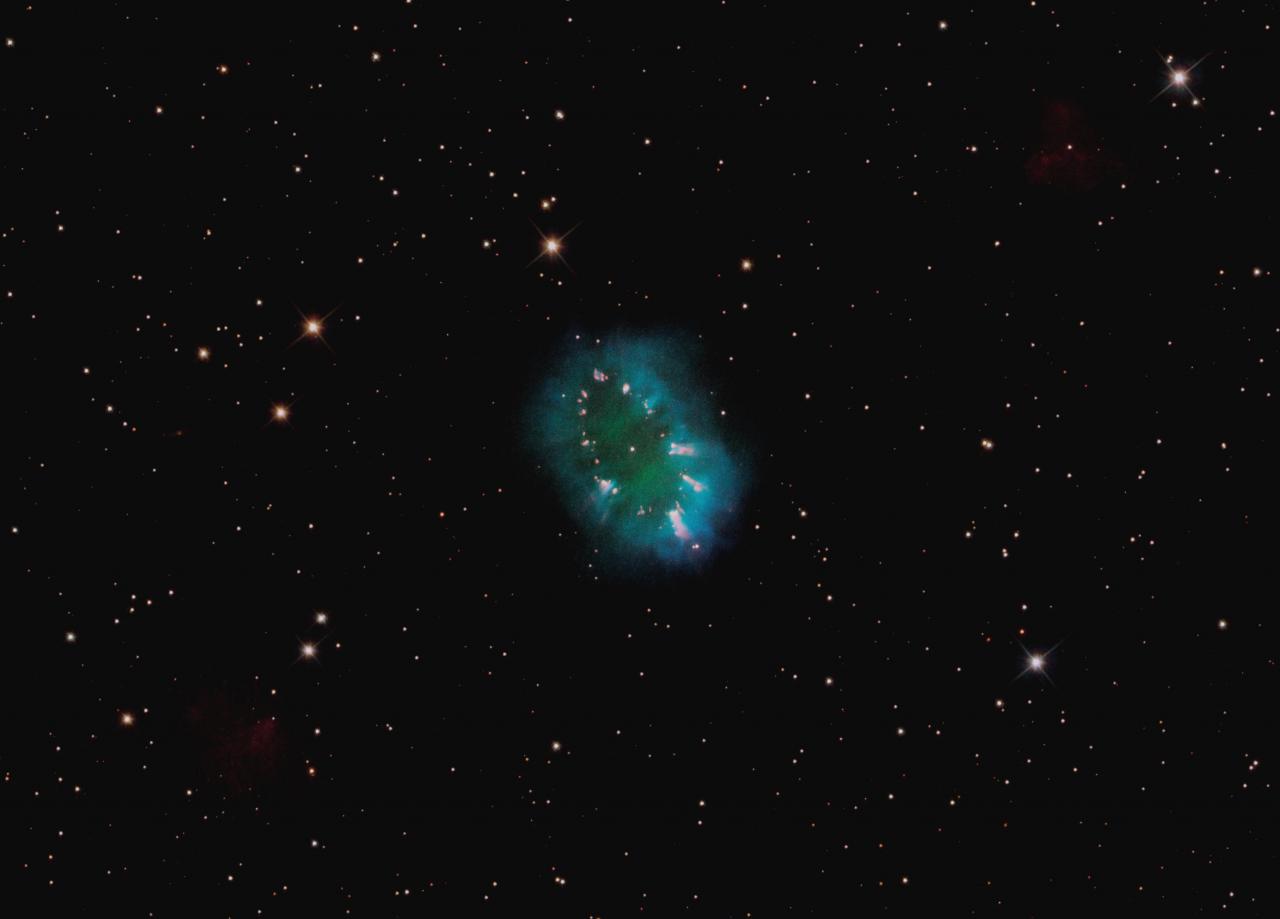General
This project has three major objectives: 1) To determine the physico-chemical characteristics of bipolar planetary nebulae and symbiotic nebulae, to help understanding the origin of bipolarity and to test theoretical models, mainly models with binary central stars, aimed at explaining the observed morphology and kinematics. 2) To study the low-ionization microstructures in planetary nebulae, their origin (in the context of the main shell formation), their physico-chemical characteristics, and their interaction with the nebular gas. 3) To discover and study galactic and extragalactic planetary nebulae, analyzing their physico-chemical properties and the metallicity gradients along the galactic discs.
Members
Results
Miszalski, B and collaborators (2016, MNRAS, 456, 633) re-discovered a dwarf nova system, an eruption of which was first observed by ancient Chinese astronomers in the year 483 CE. Hillwig, T and collaborators (2016, ApJ, 832, 125) demonstrated that the symmetry axes of planetary nebulae with binary central stars always lie perpendicular to the orbital plane of the central binaries. The probability of encountering such a tight correlation by chance is less than a million to one.
Scientific activity
Related publications
-
The UV-Excess survey of the northern Galactic plane
The UV-Excess survey of the northern Galactic plane images a 10° × 185° wide band, centred on the Galactic equator using the 2.5-m Isaac Newton Telescope in four bands (I5875) down to ~21-22 mag ( in I5875). The setup and data reduction procedures are described. Simulations of the colours of main-sequence stars, giant, supergiants, DA and DB white
Groot, Paul J. et al.Advertised on:
102009 -
The Necklace: equatorial and polar outflows from the binary central star of the new planetary nebula IPHASX J194359.5+170901
IPHASX J194359.5+170901 is a new high-excitation planetary nebula with remarkable characteristics. It consists of a knotty ring expanding at a speed of 28 km s-1, and a fast collimated outflow in the form of faint lobes and caps along the direction perpendicular to the ring. The expansion speed of the polar caps is ˜100 km s-1, and their
Corradi, R. L. M. et al.Advertised on:
12011 -
The kinematics of the quadrupolar nebula M 1-75 and the identification of its central star
Context. The link between how bipolar planetary nebulae are shaped and their central stars is still poorly understood. Aims: This paper investigates the kinematics and shaping of the multipolar nebula M 1-75, and briefly discusses the location and nature of its central star. Methods: Fabry-Perot data from GHαFAS on the WHT that samples the Doppler
Santander-García, M. et al.Advertised on:
92010 -
GHαFaS: Galaxy Hα Fabry-Perot System for the William Herschel Telescope
GHαFaS, a new Fabry-Perot system, is now available at the William Herschel Telescope (WHT). It was mounted, for the first time, at the Nasmyth focus of the 4.2-m WHT on La Palma in 2007 July. Using modern technology, with a spectral resolution of the order R˜15,000, and with a seeing-limited spatial resolution, GHαFaS will provide a new look at the
Hernandez, O. et al.Advertised on:
62008



